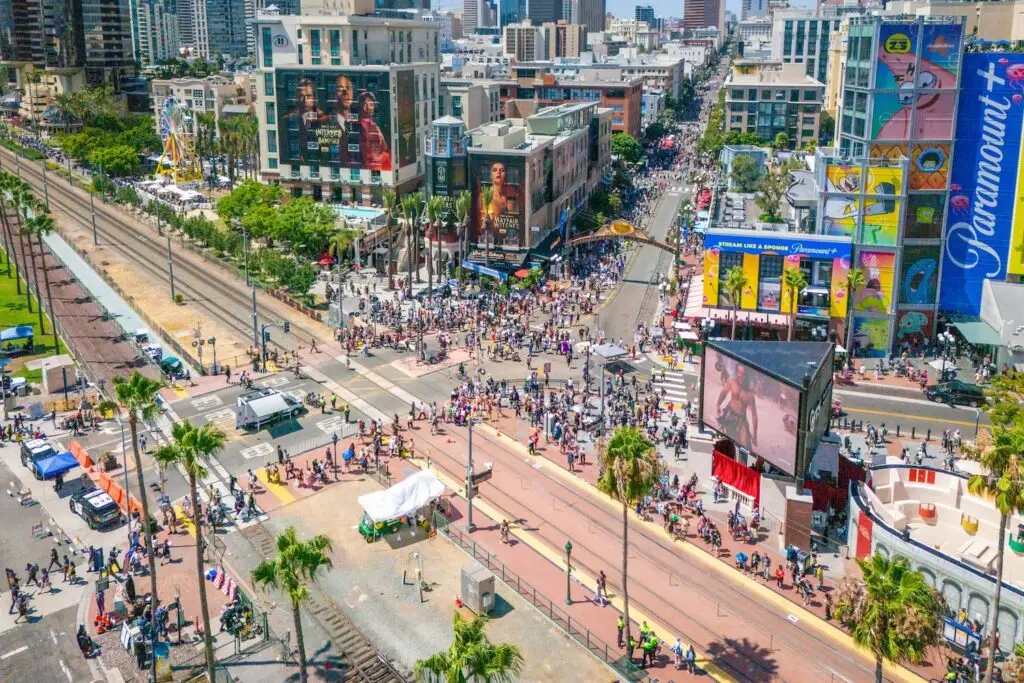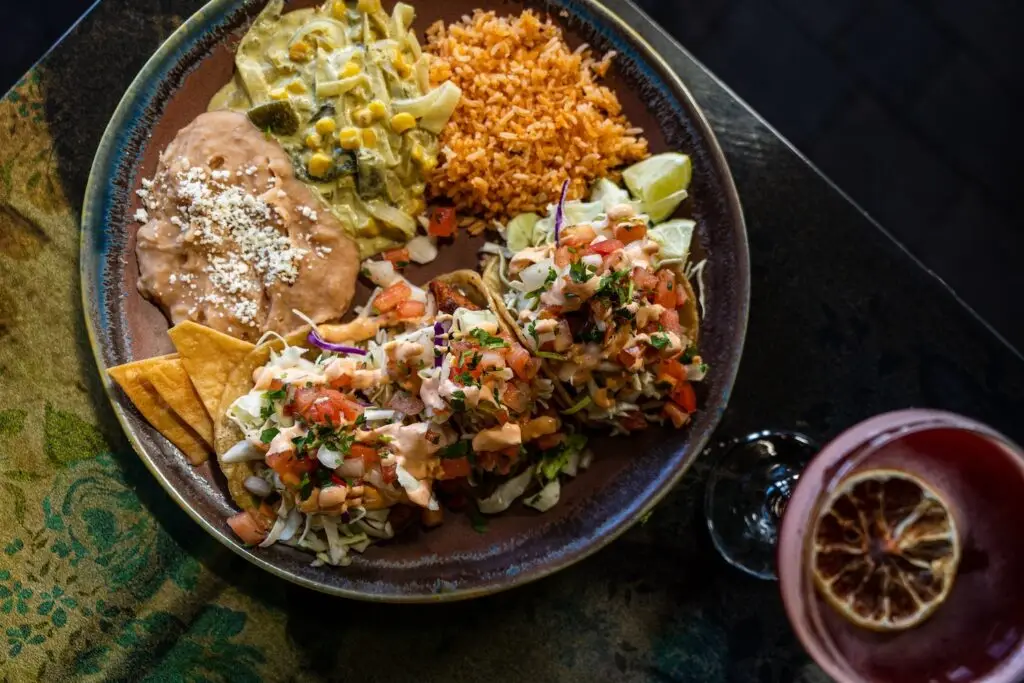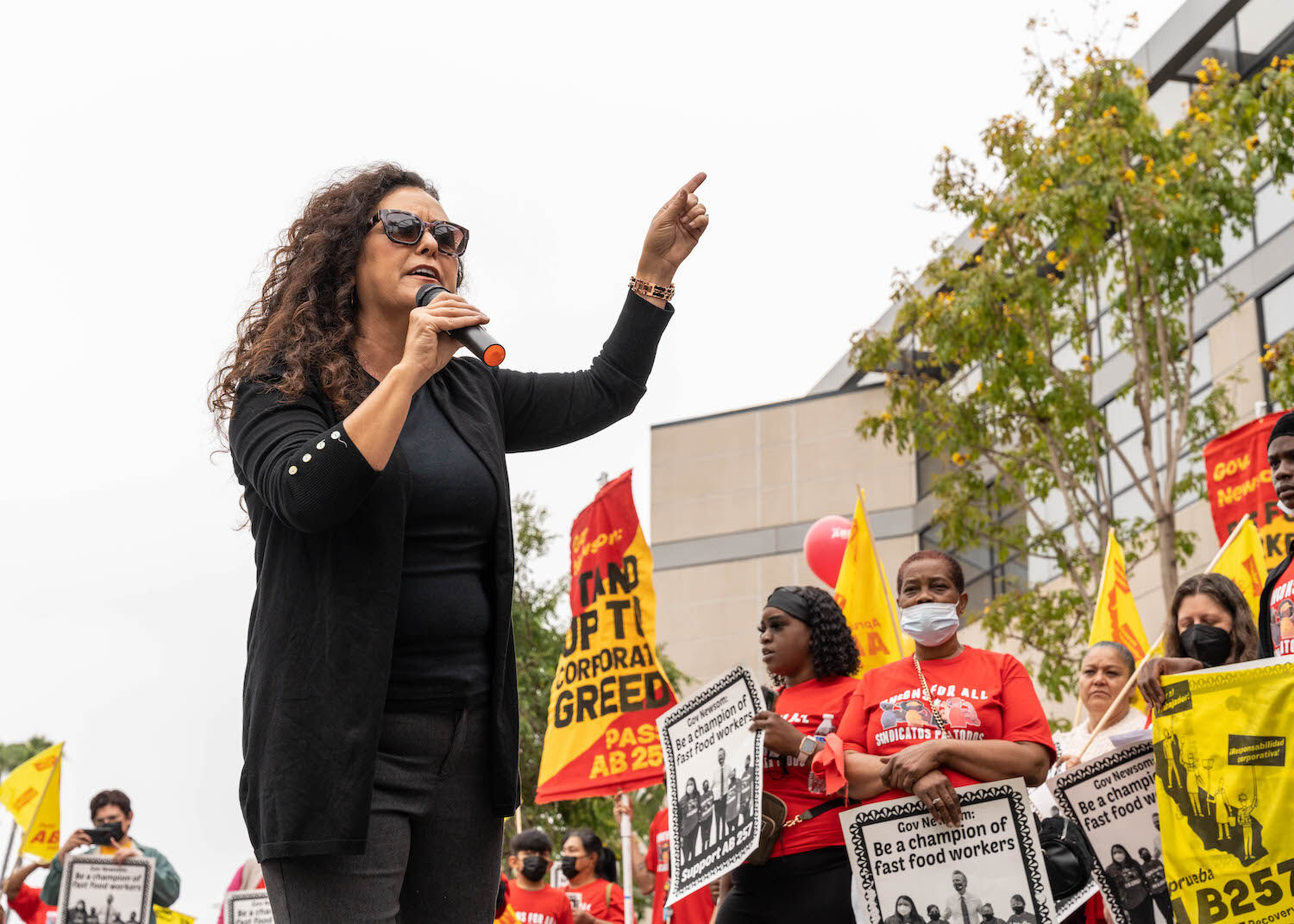
Lorena Gonzales San Diego Fast Food Automation Protest
“Corporate greed has gone far enough,” Lorena Gonzalez boomed into a microphone. The former assemblywoman (and current head of the California Labor Federation) was standing outside the San Diego headquarters of Jack in the Box last summer as dozens of fast-food workers and union organizers cheered her on.
Moments later, the labor activists locked arms and walked onto a nearby roadway in Kearny Mesa to block traffic, putting their bodies in harm’s way. In both English and Spanish, a police officer declared the gathering illegal and threatened to use chemical agents.
The protest ended peacefully, but, by then, the point had been made. Across the state, workers walked off the job and went to the media with grievances: They were overheating, always on call, forced to work while sick, being denied breaks. The point was to pull back the curtain on the true cost of fast food and push for changes at the state level rather than conduct wage battles at thousands of individual franchises.
The modern fast-food restaurant, an invention of mid-20th-century car culture in Southern California, is an impressive feat of engineering and a wildly extractive enterprise. It is sustained by agricultural and infrastructure subsidies and low wages.
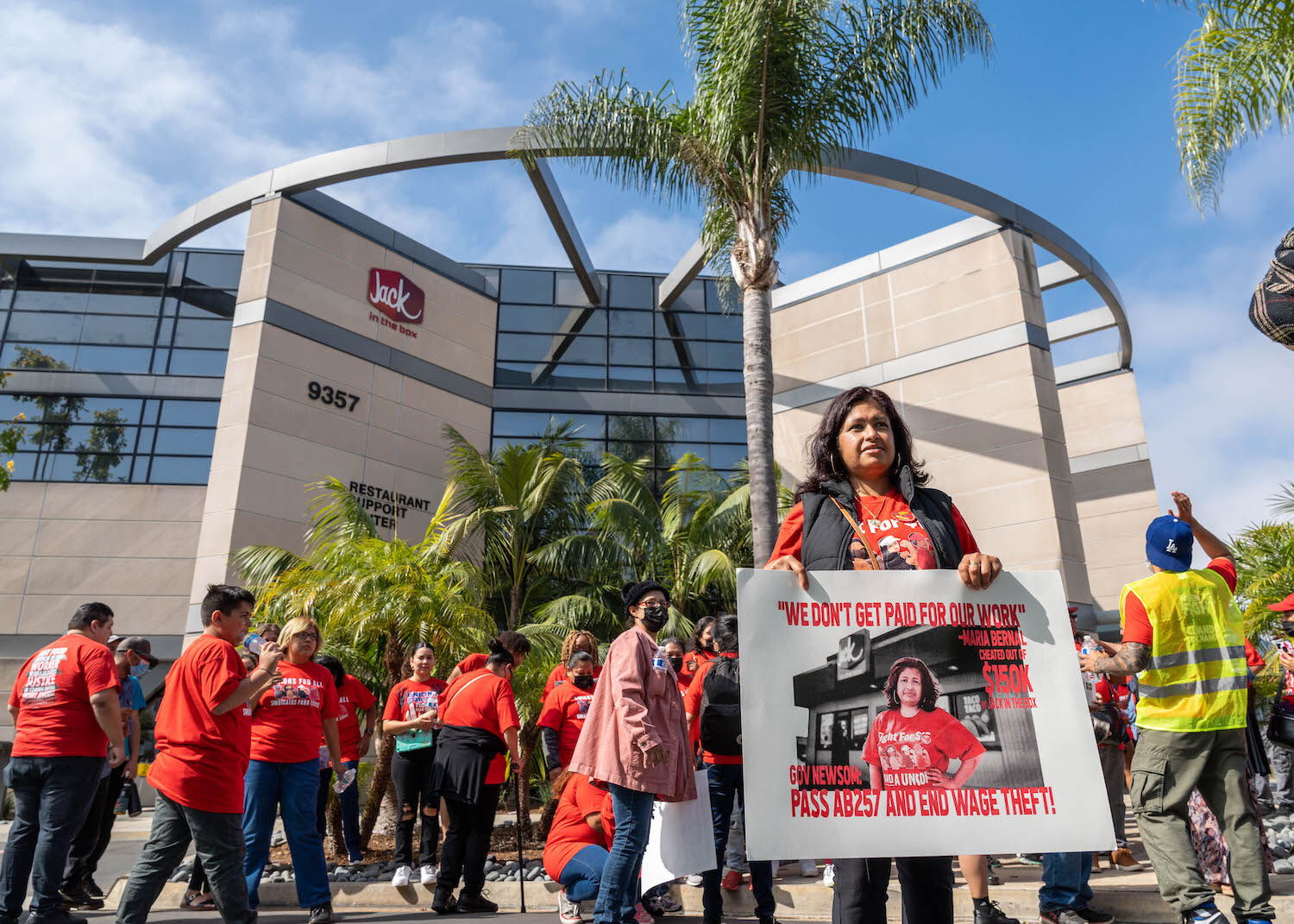
San Diego Fast Food Automation Protest
A UCLA study released in early 2022 concluded that fast-food worker households are more likely than others to fall below the federal poverty line, and most need public assistance to survive. The workforce is made up predominantly of people of color, and many are immigrants increasingly at risk of losing their jobs to automation.
Nevertheless, labor organizing in fast food is notoriously difficult because of the structure of the industry. The corporations operate more like real estate companies, leasing their land to the franchise owner responsible for the brand’s daily management.
While the corporations make healthy profits, franchise owners have long argued that they operate like any other small business on razor-thin margins. In normal times, the franchisee could easily replace an employee who spoke up, but the pandemic and a tight labor market created a new set of conditions. That gave the workers leverage.
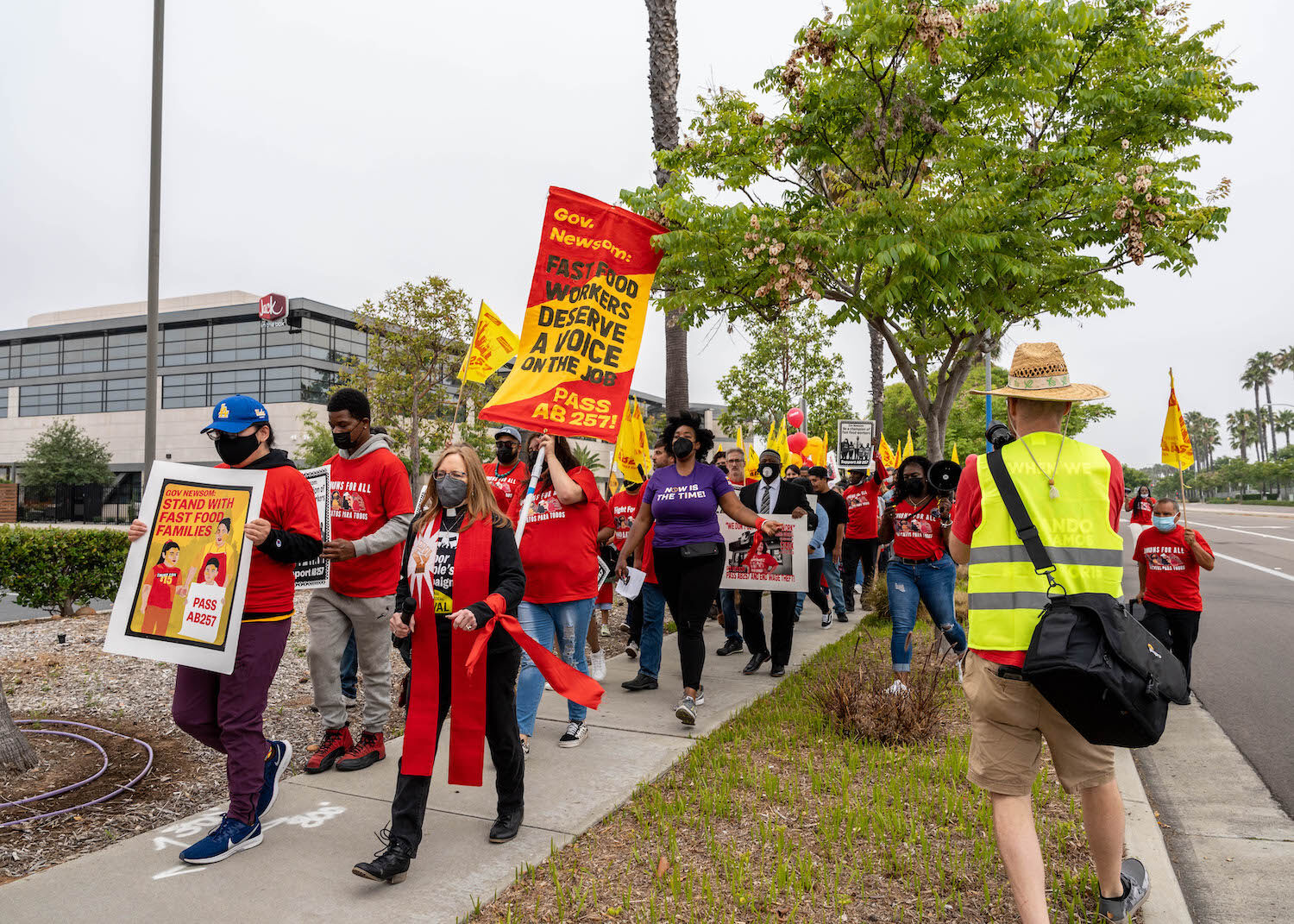
San Diego Fast Food Automation Protest Signs
Weeks after the protest in San Diego, lawmakers in Sacramento established a new council within the California Department of Industrial Relations. Inspired by a European model of bargaining across an entire sector, the council is made up of workers and employers to collectively promulgate minimum standards on wages, working conditions, and training. The debates in the legislature broke down along partisan lines. Republicans argued in opposition, alleging that lawmakers were singling out one industry for special oversight and that the cost of higher wages would be passed down to consumers. Some ate up floor time by reciting lists of fast-food restaurants.
After Gov. Gavin Newsom signed the bill, the corporations and franchise owners immediately sprang into action. They set up the Save Local Restaurants coalition—contending that the new law is “a solution in search of a problem”—and raised more than $21 million to sucessfully place a referendum on the statewide 2024 ballot successfully. Starbucks, In-N-Out, and Chipotle were among the largest contributors, with additional funding coming from other groups like the National Restaurant Association and the US Chamber of Commerce.
PARTNER CONTENT
Fast-food industry workers and their allies are now asking voters to intervene on their behalf. Until then, the new law is on hold.





